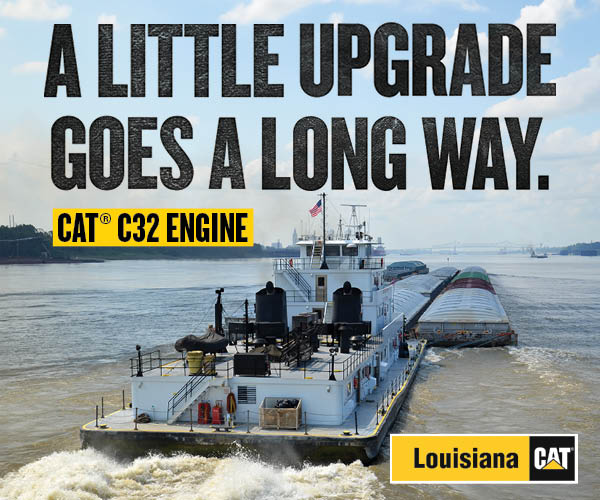Charleston Harbor Deepened To 52 Feet, Is Deepest On East Coast
South Carolina Ports Authority (SC Ports) leaders, along with government officials and maritime stakeholders, gathered in Charleston December 5 to mark the official completion of the Charleston Harbor Post 45 Deepening Project, which increased the ship channel’s depth from 45 feet to an East Coast-leading 52 feet. What’s more, the entrance channel leading to Charleston’s harbor has been deepened to 54 feet, from a prior depth of 47 feet.
“It is a truly historical moment to be celebrating this monumental achievement,” SC Ports President and CEO Barbara Melvin said. “Charleston Harbor has been deepened to 52 feet. With the deepest harbor on the East Coast, we can efficiently work mega container ships at any tide. This investment will bring economic success to South Carolina for generations to come.”
The U.S. Army Corps of Engineers began studying the project in 2011, and the $580 million project quickly garnered the financial backing of the South Carolina General Assembly, which in 2012 set aside $300 million, the full estimated cost share for the state. The U.S. Army Corps of Engineers issued a favorable Chief’s Report in September 2015, with congressional authorization following just over a year later. Federal appropriations followed in 2017, 2018 and 2019, and $138 million was included in the 2020 Energy and Water Appropriations bills, which fully funded the project to completion.
Dredging for the deepening project began in 2018, and over the four years since, the Corps awarded five dredging contracts: three to Great Lakes Dredge & Dock, one to Norfolk Dredging Company and one to Marinex Construction Inc.
“Our deepening project was completed faster than any other project of its kind in the nation,” Melvin said. “It required tremendous dedication, collaboration and creativity from everyone involved over the past decade. We had an amazing project partner [in] the U.S. Army Corps of Engineers Charleston District, as well as the dredging companies, environmental groups and business partners who worked alongside us.”
Melvin went on to thank South Carolina Gov. Henry McMaster, the state legislature, the state’s congressional delegation, and both the Obama and Trump administrations, which supported the study, authorization and appropriations for the project.
“The 52-foot depth gives South Carolina a major edge in recruiting new jobs and investment while announcing to the world that this is the place to do business,” McMaster said. “This was the epitome of a team effort, involving members of our federal delegation, led by U.S. Sen. Lindsey Graham, the General Assembly and the Ports Authority leadership team.”
Lt. Col. Andrew Johannes, commander of the Charleston Engineer District, said, like the historic city of Charleston, the harbor has quite a story to tell.
“In 1760, during the age of sail, the harbor averaged a depth of only 12 feet,” Johannes said. “Nearly 100 years later, in 1851, the harbor underwent its first deepening to 17 feet to accommodate larger, heavier steam vessels, and the world’s first hydraulic dredge, the General Moultrie, was employed.
“Today, the Army Corps of Engineers, working with our great partners, has deepened the Charleston Harbor to a depth of 52 feet,” he continued, “and the harbor can now safely accommodate the largest cargo ships in the world at any time, thus strengthening the economy of South Carolina and the nation.”
The deepening of the entrance channel to 54 feet ensures that ships see little impact from the tidal ranges there, which are between 5 and 6 feet. The 52-foot channel extends through Charleston Harbor and up portions of both the Cooper and Wando rivers, including the Union Pier Terminal, Columbus Street Terminal, the planned inner-harbor barge terminal, the Wando Welch Terminal on the Wando, and the Leatherman Terminal on the Cooper. Phase one of the Hugh K. Leatherman Terminal opened in March 2021 and has an annual container throughput capacity of 700,000 TEUs. When fully built out, that facility alone will be able to handle 2.4 million TEUs annually.
Already, the ports and terminals under the SC Ports umbrella account for a $63.4 billion economic impact in the state and a direct connection to 10 percent of all jobs in South Carolina. With the deepened harbor, that impact will continue for years to come, stakeholders said.
“The importance of the Charleston Harbor deepening project cannot be overstated,” said Sen. Tim Scott (R-S.C.). “By successfully deepening our harbor to 52 feet, we have ensured that one of our greatest assets will continue to generate revenue for the Palmetto State and create opportunities for South Carolinians.”
Sen. Lindsey Graham (R-S.C.) called the port a “cornerstone of South Carolina’s economy.”
“When we started this project in 2011, we understood that failure was simply not an option,” Graham said. “The future of jobs, in every corner of our state and across a range of industries from manufacturing to agriculture to everything in between, hung in the balance. Today, we take time to remember the important milestones, look back at the hard work that brought us to this point, and celebrate our success in completing this project.”



